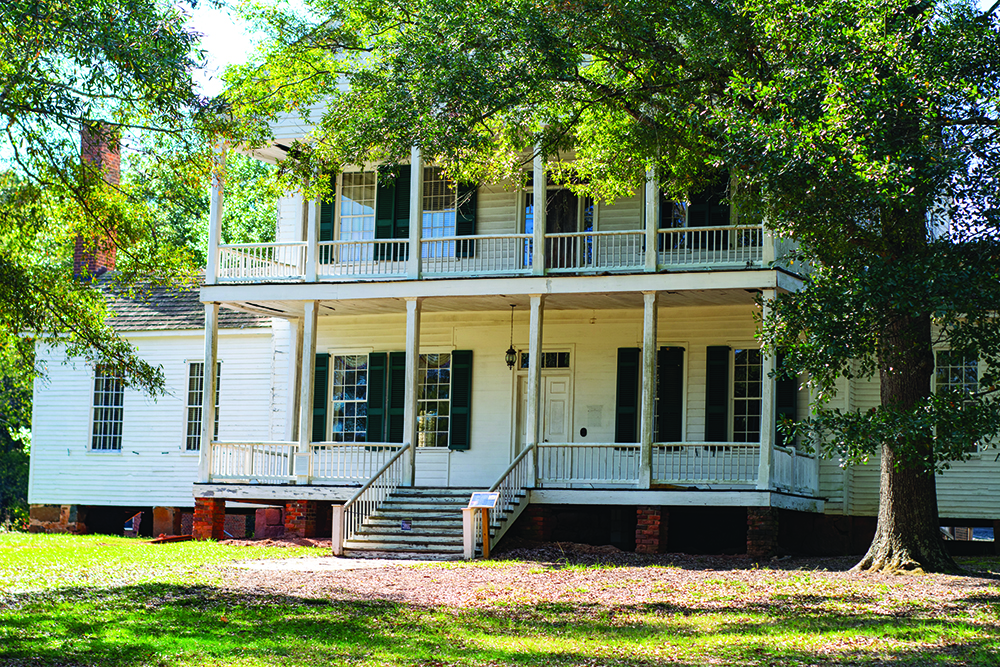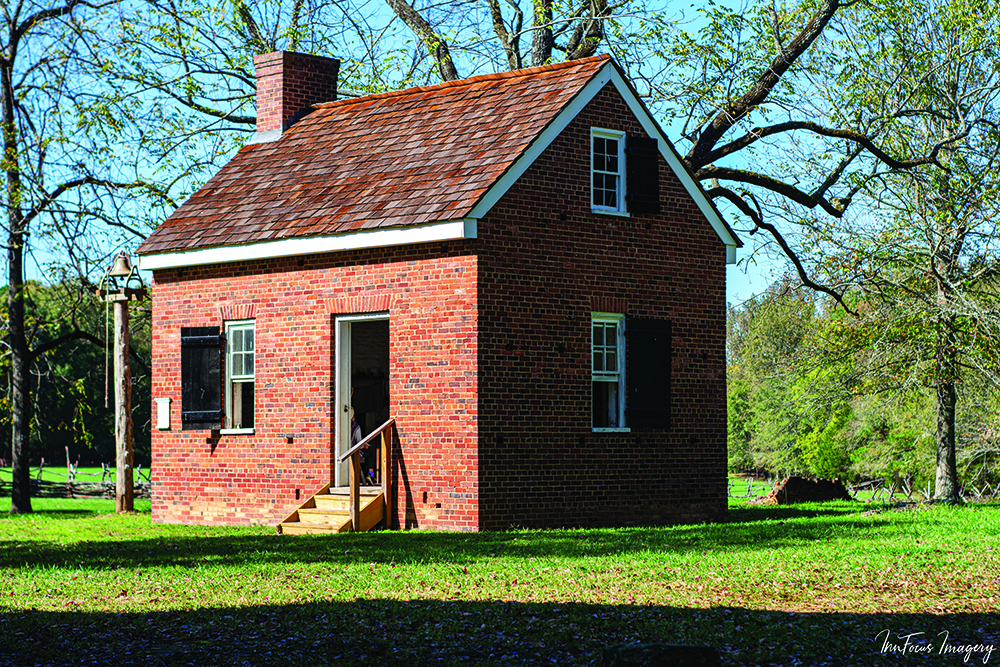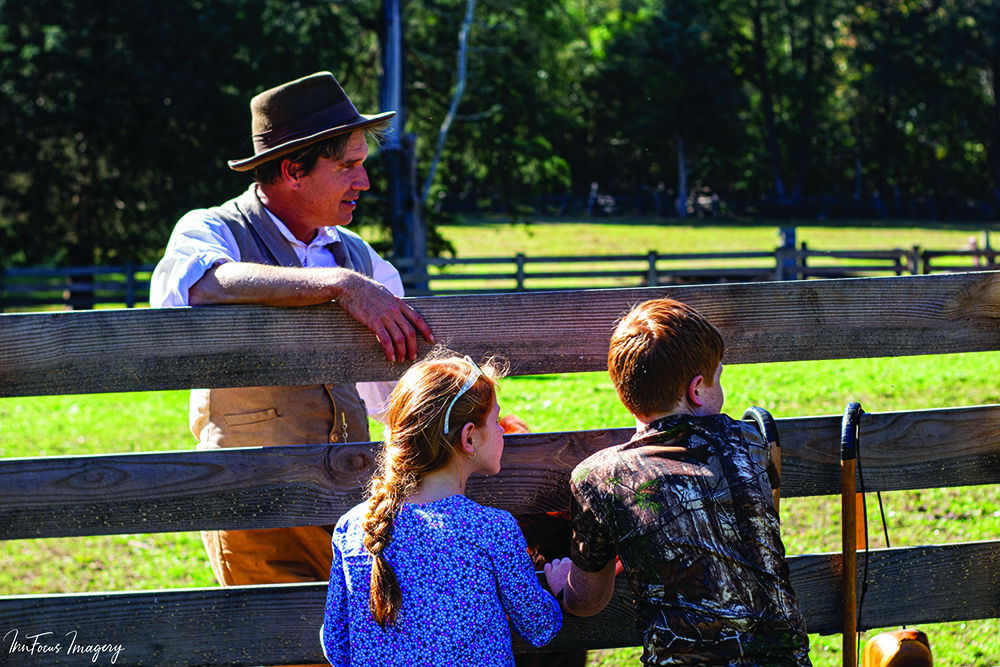Story and Photos by Courtney Riddle
Stepping out of the edge of the woods at Historic Brattonsville is a lot like stepping back in time or better yet like cracking the seal on a time capsule. Not the stuffy, dusty kind filled with long forgotten mementos but more of an encapsulation of a complete time period. With over thirty historical structures ranging from the 1750’s to the 1850’s, a Revolutionary War battlefield, and a variety of interpreters in full time period attire, the 800-acre Brattonsville site gives a firsthand perspective of life in the Carolina Backcountry. Built up from its humble beginnings as a 200-acre farm purchased in 1766 by Colonel William Bratton, the estate became one of the most prestigious cotton plantations in the area at a whopping 6,000-acres under the direction of William’s son, Dr. John Simpson Bratton.
We started our tour by checking in at the visitor’s center where you can watch a short video chronicling the history of the immigrated Scotch-Irish Bratton family and a recounting of the Revolutionary War Battle of Huck’s Defeat that took place onsite. This building also houses the gift shop in which we perused an eclectic mix of wares from multiple local artisans. After leaving the visitor’s center, you can either explore the 18th century outcropping to the right or cross the street to visit the 19th century portion of the site.
Our family visited on a day with special events taking place at the farm, so we started off exploring the 19th century structures and the award-winning Heritage Farm Program. Brattonsville is home to several traditional livestock breeds that were kept by early American settlers, also known as heritage breeds. These include a small herd of Devon cattle, Guinea hogs, Gulf Coast Sheep and Dominique chickens. The interpreters here are not simply actors portraying roles or reciting lines, these folks are maintaining this working farm by caring for the livestock and cultivating the fields all while educating guests about traditional ways of life during the 19th century. We found the interpreters to be down to earth and authentic in their enjoyment of what they do here as they shared their enthusiasm over the livestock they care for.
We also toured the prominent Homestead House, built in the mid 1820’s by Dr. John Simpson Bratton, as well as many smaller buildings including the assembly hall, the kitchen, a brick slave house, etc. For the movie buffs, much of Historic Brattonsville, including the Homestead House, was used as a backdrop in the filming of The Patriot, starring Mel Gibson. After exploring here, we crossed over to the 18th century buildings which include the original house built by Colonel Bratton around 1766, the McConnell House built in the 1820’s and multiple other historic buildings. At the McConnell House, we once again interacted with an interpreter whom was teaching about dyeing the harvested wool of the sheep raised onsite. She explained with keen understanding the various natural elements that were used to change the coloring of the wool. To say we learned a lot about the convenience of modern-day life throughout the day is quite the understatement.
Historic Brattonsville hosts many special events throughout the year including a reenactment of the Battle of Huck’s Defeat in July, a day of African American interpretation called By the Sweat of Our Brows in September, a Civil War reenactment in November and Christmas Candlelight Tours in December, among others. This year’s Christmas Candlelight Tours are going to be held on December 7th and 14th and tickets are offered by reservation for $10 each on their Facebook page. Historic Brattonsville is located at 1444 Brattonsville Road in McConnells. The usual hours of admission to Brattonsville are Monday-Saturday, 10am-5pm and Sunday 1pm-5pm. You can find more information to plan your visit on their Facebook page or at chmuseums.org. We hope you enjoy your visit to this hidden gem in York County as much as we did! ♦







